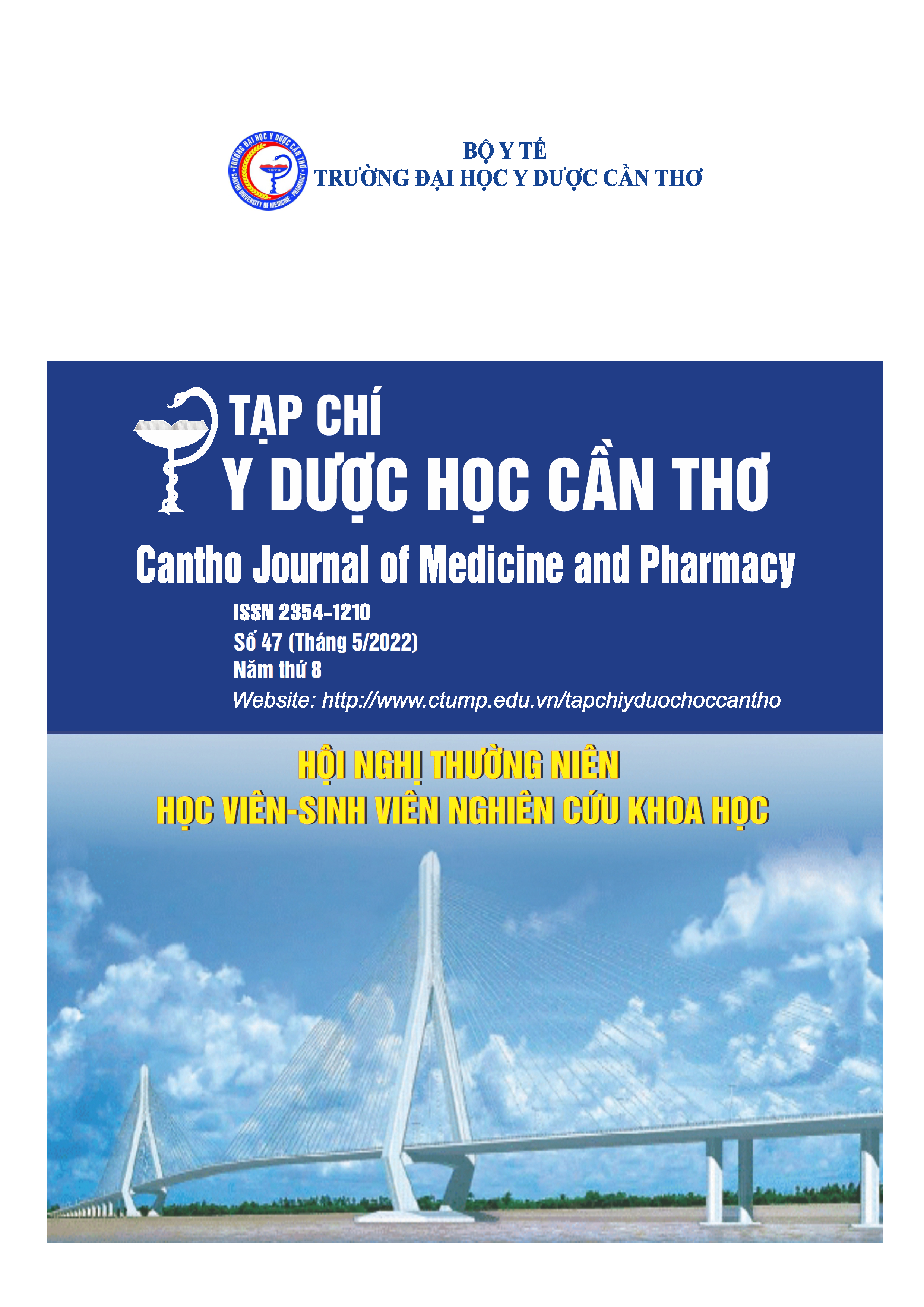Study on clinical characteristics and evaluating treatment results of bell’s palsy patients at Can Tho Central General Hospital and Can Tho University of Medicine and Pharmacy Hospital in 2020 – 2022
Main Article Content
Abstract
Background: The primary and most common cause of peripheral VII nerve palsy is Bell’s palsy, which may be related to a viral attack of facial neuritis. Despite evidence of a role in viral infection, the therapeutic efficacy of antiviral agents for Bell’s palsy is unclear. However, it has been reported that the combination of antiviral- Withdrawal and steroids is more effective than steroids alone. Objectives: To describe the clinical characteristics and to evaluate treatment results of patients with Bell’s palsy. Materials and methods: A cross-sectional descriptive study was conducted on 70 patients diagnosed with Bell’s palsy at Can Tho Central General Hospital and Can Tho University of Medicine and Pharmacy Hospital met the sampling criteria and had no exclusion criteria. Participants were evaluated on clinical characteristics and treatment results at admission, after one week, and after four weeks. Results: The main reason for hospital admission was a distorted mouth (71.4%). The main clinical characteristic was the disappearance of the nasolabial fold (100%), frontal wrinkles absent (98.6%), and Charles Bell’s sign (88.6%).
Treatment results after one week: the recovery rate in patients using corticosteroids combined with acyclovir was 62.9%, compared to the group using corticosteroids alone was 54.3% (p=0.467).
Treatment results after four weeks: the recovery rate in patients using corticosteroids combined with acyclovir was 91.4% compared to the group using corticosteroids alone was 80.0% (p=0.172).
Conclusion: The prominent clinical symptoms of patients with Bell’s palsy were the disappearance of nasolabial folds, loss of frontal wrinkles, and Charles Bell’s sign. After one week and four weeks of treatment, the group of patients who used the combination treatment of corticosteroids and acyclovir had a higher recovery rate than the group of patients using corticosteroids alone.
Article Details
Keywords
Bell’s palsy, corticosteroids, acyclovir
References
2. Trương Thị Bé Sáu và cộng sự (2010), “Hiệu quả của điều trị liệt dây thần kinh VII ngoại biên bằng châm cứu tại khoa Y học cổ truyền – Bệnh viện Đa khoa Tiền Giang”, Hội nghị khoa học kỹ thuật Đại học Y Dược TP. HCM lần thứ 27 – 14/05/2010, 14 (2), 58-61.
3. Lê Văn Minh, Vũ Duy Hòa, Phạm Kiều Anh Thơ (2020), “Nghiên cứu đặc điểm lâm sàng và đánh giá kết quả điều trị của corticoid và thuốc kháng virus trên bệnh nhân liệt Bell tại Bệnh viện Đa khoa Trung ương Cần Thơ và Bệnh viện Trường Đại học Y Dược Cần Thơ”, Tạp chí Y Dược học Cần Thơ, số 31/2020, 102-108.
4. Kang, H. M. (2014), “Steroid plus antiviral treatment for Bell’s palsy”, Journal of Internal Medicine, 277 (5), 532-539.
5. Lee HY, Byun JY, Park MS, Yeo SG (2013), “Steroid-antiviral treatment improves the recovery rate in patients with severe Bell’s palsy”, The American Journal of Medicine,126, 336-341.
6. Dhruvashree Somasundara, Frank Sullivan (2017), “Management of Bell’s palsy”, Australian Prescriber, 40(3), 94-97.
7. Ahmed A. (2005), “When is facial paralysis Bell palsy? Current diagnosis and treatment”, Cleveland Clinic Journal of Medicine, 72 (5), 398-405.
8. Insu Song (2013), “Profiling Bell’s palsy based on House-Brackmann Score”, Journal of
Artificial Intelligence and Soft Computing Research, 3(1), 41-50.


